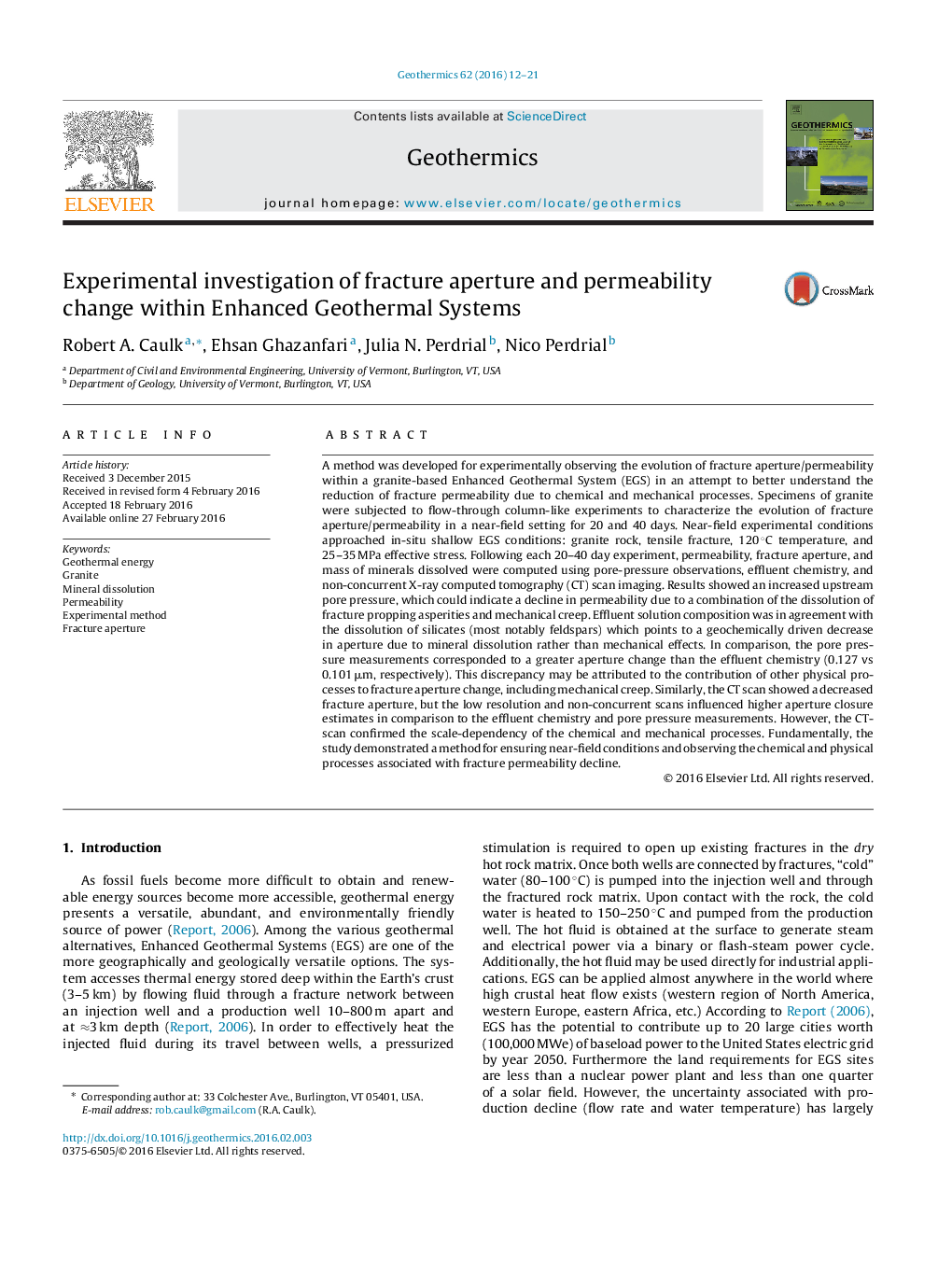| Article ID | Journal | Published Year | Pages | File Type |
|---|---|---|---|---|
| 1742153 | Geothermics | 2016 | 10 Pages |
•We experimentally model a granite based EGS fracture.•Chemical and physical observation methods used to observe fracture aperture change.•Pressure dissolution contributes to fracture aperture reduction.•Discrepancies between chemical and physical analyses may be due to mechanical creep.
A method was developed for experimentally observing the evolution of fracture aperture/permeability within a granite-based Enhanced Geothermal System (EGS) in an attempt to better understand the reduction of fracture permeability due to chemical and mechanical processes. Specimens of granite were subjected to flow-through column-like experiments to characterize the evolution of fracture aperture/permeability in a near-field setting for 20 and 40 days. Near-field experimental conditions approached in-situ shallow EGS conditions: granite rock, tensile fracture, 120 °C temperature, and 25–35 MPa effective stress. Following each 20–40 day experiment, permeability, fracture aperture, and mass of minerals dissolved were computed using pore-pressure observations, effluent chemistry, and non-concurrent X-ray computed tomography (CT) scan imaging. Results showed an increased upstream pore pressure, which could indicate a decline in permeability due to a combination of the dissolution of fracture propping asperities and mechanical creep. Effluent solution composition was in agreement with the dissolution of silicates (most notably feldspars) which points to a geochemically driven decrease in aperture due to mineral dissolution rather than mechanical effects. In comparison, the pore pressure measurements corresponded to a greater aperture change than the effluent chemistry (0.127 vs 0.101 μm, respectively). This discrepancy may be attributed to the contribution of other physical processes to fracture aperture change, including mechanical creep. Similarly, the CT scan showed a decreased fracture aperture, but the low resolution and non-concurrent scans influenced higher aperture closure estimates in comparison to the effluent chemistry and pore pressure measurements. However, the CT-scan confirmed the scale-dependency of the chemical and mechanical processes. Fundamentally, the study demonstrated a method for ensuring near-field conditions and observing the chemical and physical processes associated with fracture permeability decline.
